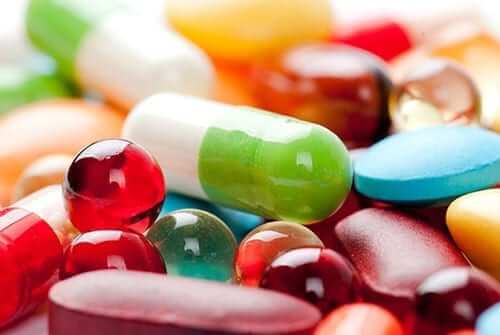Each year diabetes treatment becomes more sophisticated with new technology, better medications and increased knowledge and awareness from our medical practitioners. Certain aspects of diabetes treatment remains the same throughout the years, but following old protocols might not be enough for blood sugar control in the upcoming year. Let’s examine some of the latest trends and old standby advice that you can include in your diabetes treatment plan to make this an improved year of control:
Advances in Cardiovascular Disease in Diabetes Patients
Many previous diabetes medications have not been able to prove effective in “halting or protecting against cardiovascular disease.” Some diabetes medications have actually increased heart problems. Cardiovascular disease remains the “leading cause of death in those with diabetes” and numerous investigations and studies have continued to track diabetes medications in relation to heart health. The diabetes oral medication that “finished strong” according to the FDA relating to heart health was Jardiance. Jardiance or empagliflozin, had the winning FDA approval for prevention of cardiovascular disease. It helped reduce the risk of myocardial infarctions or heart attacks. Jardiance is a SGLT 2 inhibitor which works specifically on the kidneys. Instead of recycling sugar back into the blood stream, which is what kidneys normally do, Jardiance pulls some sugar out of the blood stream through the urine. Side effects may include dehydration, increased urination, and genital and urinary tract infections. More severe kidney issues may present as well.
DKA (diabetic ketoacidosis) may occur while on this medication. DKA can occur when too little insulin is taken, blood sugars get too high or when patients are already suffering from a major unrelated illness. DKA is very uncommon in type 2 diabetes which is the patient population taking Jardiance. Make sure to stay hydrated by drinking plenty of water and report any new urinary tract symptoms or large swings in blood sugars to your physician. There are other SGLT 2 inhibitors available such as Invokana and Farxiga but they did not show as large a cardiac benefit as Jardiance. Other diabetes medications which showed “good results and received FDA approval for improvement in cardiovascular mortality in those with diabetes” were Actos, Pioglitazone, Victoza and Liraglutide. Actos is an oral diabetes medication taken by those with type 2 which works as an “insulin sensitizer.” It improves how your body reacts to its own insulin. Side effects from Actos may include swelling, macular edema, heart failure and changes to the liver enzymes. Again, always report any changes in symptoms to your doctor immediately. Victoza, a GLP1 injectable (not insulin) was also on the FDA list for cardiovascular improvement in those with diabetes. Victoza is injected once daily, works on the gut to slow gastric emptying, works on the brain to decrease appetite, reduces sugar produced in the liver and makes your insulin more sensitive. Side effects can include pancreatitis and an increase in thyroid medullary tumors. Check with your physician to see if any of these medications may be right for you. They will help you weigh the risks and benefits.
Medtronic Minimed 670 G Insulin Pump
Although there have been many previous insulin pumps this one was recently FDA approved for type 1 diabetes as a “closed loop insulin delivery system.” Experts agree this is a “huge step for type 1 diabetes management.” It is the closest thing to an “automatic pancreas.” The 670G insulin pump “allows insulin to be suspended prior to low blood sugars by automatically stopping insulin 30 minutes prior to reaching low limits and restarts insulin when blood sugars begin to rise.”
Nutrition Tidbit
According to the 2015-2020 US Dept. of Agriculture the focus “is on the quality of fats instead of the total dietary fat intake.” The guidelines confirm that “saturated fats are harmful compared to Omega 3 and Omega 6 fatty acid foods.” There is agreement that people should opt for more plant-based approaches such as the DASH diet or the Mediterranean diet. Both of these diets focus on and include fish, vegetables, fruit, legumes, seeds, nuts, whole grains and olive oil. They can include grass-fed beef and small amounts of red wine. These diets have shown a reduction of chronic diseases including diabetes, heart disease, metabolic syndrome, obesity, stroke, dementia-Alzheimer and cancer.
Soda Tax
Study after study in 2016 concludes that “drinking regular soda can be detrimental to your health.” A single can of soda contains “18 teaspoons of sugar” and should be avoided by those with diabetes as well as those who have pre-diabetes. San Francisco, Chicago, Philadelphia and Berkeley, California are some of the cities already on board for the soda tax to curb obesity and diabetes rates. More cities plan to focus on this tax in 2017. Mexico has already seen results from the soda tax and “results show junk food and soda taxes do work.” These taxes do tend to impact the lowest socio-economic groups who usually have the most untreated heart disease, obesity and diabetes.
Basaglar and Adlyxin

Treat Hypoglycemia the Right Way
There are still many patients who use low blood sugars or hypoglycemia as an excuse for sweets such as candy bars, gummy bears and ice cream to raise blood sugars. Hypoglycemia is a “real situation” of diabetes and should be treated seriously. Blood sugars drop below 70mg/dl and if ignored can result in seizures, unconsciousness and even death if not treated. The feelings or sensations of hypoglycemia may include: anxiety, weakness, being irritated, jitters, confusion, heavy sweating, a lack of concentration, hunger, nervousness, headache, nausea and fast heartbeat. It can occur in those who have type 1 or 2 diabetes.
Hypoglycemia may be caused by too much insulin or oral sulfonylurea medication, skipping a meal, eating too few carbohydrates, exercising too much or drinking alcohol without eating. The best way to treat hypoglycemia remains chewing glucose tablets or eating gel which can offer a “fixed amount of glucose and calories.” This is not new technology. Standard treatment recommends 3- 4 glucose tablets or 15 grams of a simple carbohydrate followed by a 15-minute waiting period. Retesting blood sugar is suggested and if the blood sugar does not rise then retreatment is required with 15 more grams of carbohydrate through additional glucose tablets. Eating chocolate takes way too long to metabolize for hypoglycemia since it is a fat. It also contains 200-300 calories per chocolate bar and will eventually lead to a high rebound in blood sugars which will need to be chased all day.
Glucose tablets contain about 45 calories per treatment and raise the sugars about 20- 30 points. After treating hypoglycemia, follow it with a small snack of 2 whole grain or high-fiber crackers and a teaspoon of natural peanut butter if mealtime is not within an hour. Some patients state they get “no results from glucose tablets.” A small can of regular soda or a box of fruit juice can be kept for a low blood sugar emergency as it will enter the blood stream faster than candies or chocolate Kisses. Many patients keep sweets such as mints, jelly beans or gummy bears in their purse or pocket “waiting for that emergency” and then end up munching “emergency candy” all day. For those with type 1 or those who have previously lost consciousness, a glucagon shot should be available with someone who is experienced in giving an injection. Glucagon is given subcutaneously or in the fat like insulin. 911 should be called immediately after a Gulcagon shot is administered. Some patients have “hypoglycemic unawareness” due to nerve ending damage and must be even more concerned about low blood sugars and how to treat. Always carry information in your wallet about your condition and consider wearing an ID bracelet/necklace stating “Diabetic.”
CGM is Now Covered Under Medicare as “Therapeutic”
Most patients with type 2 diabetes do not require CGM (continuous glucose monitoring) but those who are on insulin and have trouble regulating their blood sugars along with patients with type 1 diabetes are now eligible for the Dexcom G5 mobile device through Medicare. CGMs have gained popularity with The American Association of Clinical Endocrinologists for its benefits especially when it comes to preventing hypoglycemia. CGMs are now considered the “gold standard” for type 1 diabetes. It tracks blood sugar trends and gives the patient needed knowledge before it happens. CGM has the ability to “provide 288 glucose values over a 24 hour period and provides invaluable trending information especially overnight and following a meal.” The need for using a regular glucose meter still remains for testing and calibration. Always check with your health care provider for specific directions.
The ADA (American Diabetes Association) 2016 Position Statement on Exercise
The most recent ADA statement is new evidence based activity recommendation for those with diabetes and pre-diabetes is “3 minutes of activity per 30 minutes of sitting.” It could simply be marching in place, doing jumping jacks, arm circles, arm stretches, twisting at the waist or doing lunges at your desk or seat. Walk, stand, move, do leg extensions in addition to your 30 minutes a day of aerobic activity for the best effect on reducing insulin resistance and improving insulin sensitivity. “Walking after a meal” also offers tremendous benefits for people with diabetes to boost insulin sensitivity. Older adults should also include balance, weights and flexibility exercises for added strength, joint health, accident prevention and stamina.
2016 was an exciting year for those patients with diabetes. There are more advancements coming in 2017 to help people with diabetes live a long and complication free life. Remember to do your own part by remaining active, eating healthfully, keeping your medical appointments, taking your medications as prescribed and learning. You can do this!
Have a question or comment? Post below or email me at [email protected] if you would like to share them with ADW diabetes.
NOTE: Consult your Doctor first to make sure my recommendations fit your special health needs.












Leave A Comment